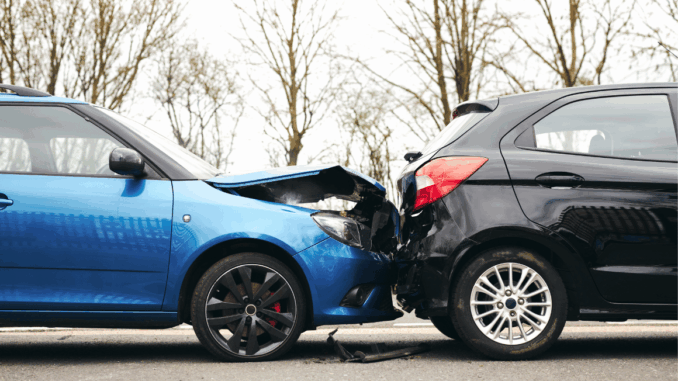
Getting your driver’s license for the first time is a huge milestone. It opens up new freedoms—but it also comes with new responsibilities. One of the most important responsibilities for first-time drivers is buying auto insurance. But with so many unfamiliar terms, coverage types, and pricing variables, it can be overwhelming.
This blog post will break it down simply so you can feel confident navigating the world of car insurance. Whether you’re a teen driver, a college student, or someone who got their license later in life, here’s everything first-time drivers need to know about auto insurance.
Why Auto Insurance Is Non-Negotiable
Auto insurance isn’t just a good idea—it’s a legal requirement in almost every U.S. state. Driving without insurance can result in fines, license suspension, and even vehicle impoundment.
Insurance protects you financially in case of:
- Car accidents
- Property damage
- Injuries to you or others
- Theft or vandalism
- Natural disasters (depending on your coverage)
Legal Minimums Vary by State
Each state sets its own minimum coverage requirements, typically including:
- Bodily Injury Liability
- Property Damage Liability
Some states also require:
- Uninsured/Underinsured Motorist Coverage
- Personal Injury Protection (PIP) or Medical Payments (MedPay)
🔍 Tip: Visit your state’s Department of Motor Vehicles (DMV) website to find the legal minimums before shopping for insurance.
Types of Auto Insurance Coverage Explained
Here’s a breakdown of the most common types of coverage:
1. Liability Coverage
This is required by law in most states. It pays for damages you cause to others (not your own vehicle).
- Bodily Injury Liability: Covers medical bills and legal fees if you injure someone.
- Property Damage Liability: Pays for damages to another person’s property, like their car or a fence.
2. Collision Coverage
Covers damage to your own car from a collision, regardless of fault.
3. Comprehensive Coverage
Protects against non-collision damage like theft, vandalism, fire, hail, or a fallen tree.
4. Uninsured/Underinsured Motorist Coverage
Covers your costs if the at-fault driver doesn’t have enough insurance—or any at all.
5. Medical Payments or Personal Injury Protection (PIP)
Covers medical expenses for you and your passengers, regardless of fault.
How Much Coverage Do You Actually Need?
As a first-time driver, it might be tempting to go with the cheapest policy, but minimum coverage often won’t be enough after an accident.
Consider:
- The value of your vehicle
- Your ability to pay out-of-pocket
- Whether you lease or finance your car (lenders usually require full coverage)
✅ Recommended for First-Time Drivers: At least 100/300/100 in liability coverage, collision and comprehensive coverage (especially for newer cars), and uninsured motorist coverage.
Factors That Affect Your Car Insurance Rates
As a new driver, your premium may be higher because you don’t have a driving history yet. Here’s what insurance companies look at:
- Age and Gender
- Driving Record
- Location (state, city, zip code)
- Type of Vehicle
- Credit Score (in most states)
- Annual Mileage
- Whether You’re a Student or Employed
📉 Ways to Lower Your Premium:
- Take a defensive driving course
- Bundle policies (e.g., auto + renter’s or home)
- Maintain a clean driving record
- Drive a safe, affordable car
- Ask about good student discounts
How to Shop for Auto Insurance: Step-by-Step
- Know Your State Requirements
Understand what minimum coverage you need. - Evaluate Your Needs
Consider full coverage vs. liability only. - Gather Personal Information
Have your driver’s license, car VIN, and mileage ready. - Get Multiple Quotes
Use comparison websites and contact agents directly. - Review the Policy Details Carefully
Look at limits, exclusions, and deductibles. - Ask About Discounts
You might qualify for:- Good student discounts
- Safe driver programs
- Usage-based insurance (UBI)
- Buy Your Policy and Get Proof of Insurance
Most providers offer instant digital proof.
What Happens If You Drive Without Insurance?
Driving uninsured as a first-time driver is a costly mistake. Possible consequences include:
- Fines of $500–$5,000+
- Suspension of license and registration
- Increased insurance rates later
- Lawsuits if you cause an accident
- Vehicle impoundment
Frequently Asked Questions (FAQs)
❓ Can I get insurance if I don’t own a car?
Yes, a non-owner policy covers you when driving borrowed or rented vehicles.
❓ How long does it take to get insured?
Most policies can be activated same-day once payment is processed.
❓ Do I need insurance to get a license?
In most states, no. But you do need insurance to register and drive a car.
Final Thoughts
As a first-time driver, buying auto insurance may seem complex—but it’s all about protecting yourself and others on the road. Take time to understand your state’s requirements, assess your risks, and shop smart. Over time, as your driving record improves, your insurance premiums will too.
🚗 Ready to Get Insured?
Compare quotes from at least three reputable companies to get the best deal. Don’t just go with the cheapest—go with the coverage that gives you peace of mind.
Leave a Reply